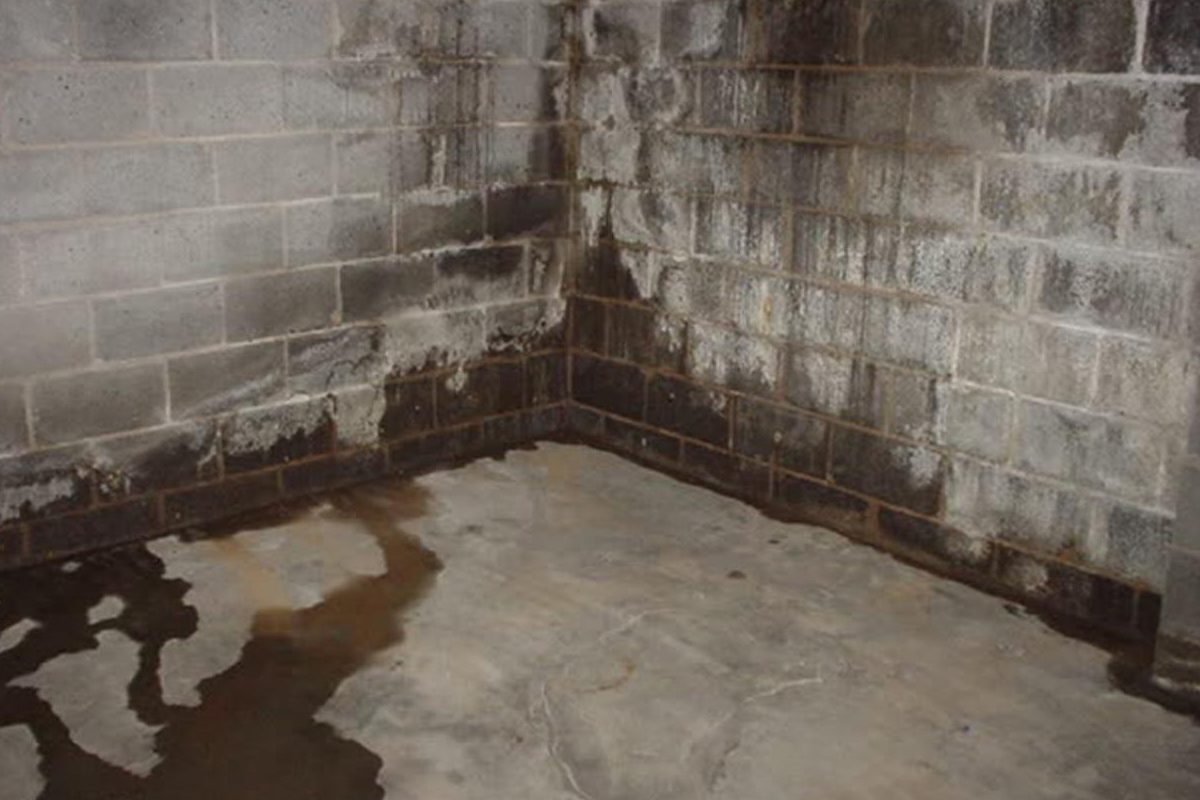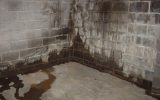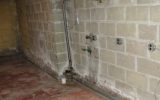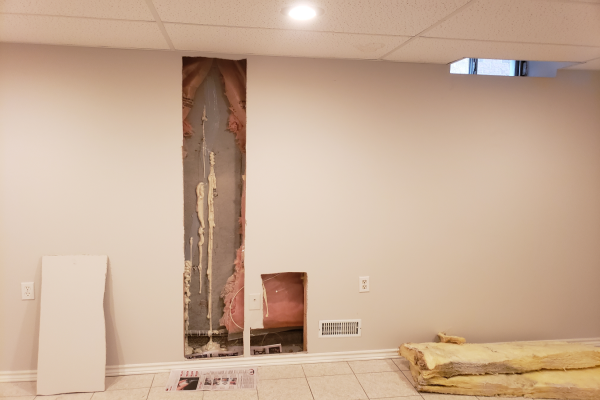This blog post discusses the likely cause(s) of a damp basement and what needs to be done to resolve the problem.
Introduction:
For many people, a damp basement is much more than a simple nuisance, depending on the extent to which a basement is damp, the basement may be completely unusable as living space. In addition, the odor of a damp basement is repulsive and mold growth must be avoided due to the potentially serious adverse health effects associated with mold. If your basement is excessively damp, something has to be done about it.
In this article we identify the reasons why basements become excessively damp and teach you how to repair a damp basement.
Why You Have a Damp Basement in The First Place
When you report that you have a damp basement you are actually reporting that there is excessive humidity in your basement. In other words, there is too much moisture in the air in your basement.
Primary causes of basement dampness
Wondering why there is so much moisture in your basement? Here are a few of the most common causes of basement dampness:
1. Cold foundation walls inside the basement are often exposed to warm moist air, causing condensation on the walls;
2. There is a basement leak introducing water into the basement and/or wet block walls are weeping moisture into the basement;
3. Moisture from the soil beneath the basement floor is wicking through the floor slab and evaporating into the ambient air;
4. Steam is being released into the ambient air from cooking activities in the basement;
5. There is a plumbing leak causing a wet basement and damp air from evaporation of the water;
6. Steam from a shower located in the basement, with insufficient ventilation to the exterior; and
7. There is no vapour barrier within the finished basement walls to prevent foundation wall moisture from drying in the basement.
How building construction practices create damp basements
The construction principles used in building your home have a definite impact on basement dampness. The role of damp proofing in residential construction is to keep liquid water and water vapour out of the basement. This is achieved by installing vapour barriers on the exterior of the foundation in order to allow inward drying to the basement space where the moisture can be removed using ventilation and/or dehumidification.
In new construction, for the concrete to cure fully, hundreds of gallons of water have to dry inwards because the exterior surface of the foundation walls are damp proofed and in contact with soil. In Toronto and the GTA in general, the building code requires the installation of insulation on basement walls; unfortunately, the insulation impedes inward drying of the walls. This situation results in the presence of condensation behind the insulation, often causing a damp basement. As the amount of moisture in the ambient air increases, so does the amount of condensation.
Typical damp-proofing of a foundation wall is shown in the following illustration:
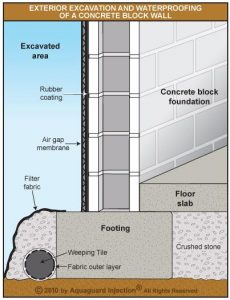
To compound the problem further, it is common practice to install a polyethylene vapour barrier within interior framed basement walls. The installed vapour barrier prevents the inward drying of the foundation walls which then results in odour, mould, and wood decay issues behind the finished basement walls. However, the vapour barrier does prevent most of the moist indoor air from coming into contact with the cold foundation walls.
Below is a picture of a common insulation blanket, with an integrated vapour barrier, which is used extensively in residential construction throughout the GTA.
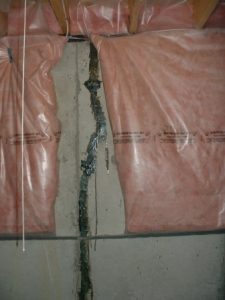
How to Fix a Damp Basement
Analysing the causes of a damp basement clearly enables us to conclude that the only way to effectively deal with a damp basement, and to control mold growth, is to control the moisture in your basement.
Actions you can take to reduce basement humidity:
1. Vent all appliances that produce moisture, such as clothes dryers and stoves, to the outside;
2. Open the basement windows to exchange damp basement air with outside air, and to promote air circulation;
3. Cool the basement air as a means of limiting the capacity of the air to hold moisture (turn on your air conditioner);
4. Run a de-humidifier in your basement with a relative humidity setting between 35° and 50° (sealing off the basement by closing the door to upstairs is essential);
5. Run the bathroom fan and/or open the window during and after showering; and
6. Use exhaust fans or open windows when you cook, operate the dishwasher, boil water etc.
Actions you can take to help prevent excessive condensation in the basement:
1. Reduce the relative humidity;
2. Increase ventilation and air circulation by opening doors and/or windows. Portable fans are useful for increasing air flow in enclosed spaces with poor air circulation; and
3. Insulate cold surfaces, such as cold water pipes and ducting, with insulation.
Actions to take to prevent mold growth:
Mold will grow on virtually any surface when the relative humidity exceeds 60°. Keep the relative humidity in your basement between 35° and 50° by implementing the measures we mentioned above. If finished basement walls or flooring ever get wet, dry everything within 24-48 hours to prevent mold growth.
If there is mold in your basement, you must clean up the mold as quickly as possible and take action to correct whatever problem is responsible for the mold growth.
When your damp basement is caused by basement leaks
If you have a plumbing leak that is responsible for your damp basement you would call a plumber. Similarly, if you suspect that you have a basement leak you need to call a waterproofing contractor to have your basement inspected and the foundation leak repaired.
What you should not do to fix a damp basement
Impermeable interior flooring such as vinyl floor coverings should be avoided – as should impermeable basement wall finishes such as paint and hydraulic cement. These impermeable materials prevent inward drying of the foundation walls and/or floor slab and can significantly contribute to mold growth and other damage in your basement by trapping moisture.

